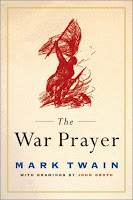Beautiful poem!
Ramblings of a Ragamuffin Child

But they urged him strongly,
“Stay with us, for it is nearly evening; the day is almost over.”
So he went in to stay with them (Luke 24:29).
.
lost in soul-darkness
stumbling in hope-numbed grief
blinded in heart
they walk beside Light and cannot see
how patiently He tugs away the blindfolds
opens their hearts
blurry
their vision still
unknowing they reach
stay with us
unconsciously pleading
until they see His hands
and run
blinded by glory
stumbling in fervent joy
lost in soul-delight
come back to life
.
so we pray
hearts bowed
tears falling
pleading alone
Lord stay with us
we feel the darkness heavy
cloaking
wrap around suffocating
we do not see the hands
reaching out
to tug away our sorrow
we stumble unseeing to our feet
alone
and walk away
.
stay with us
keep pace with our wanderings
let us see
make us see
lift the…
View original post 8 more words





